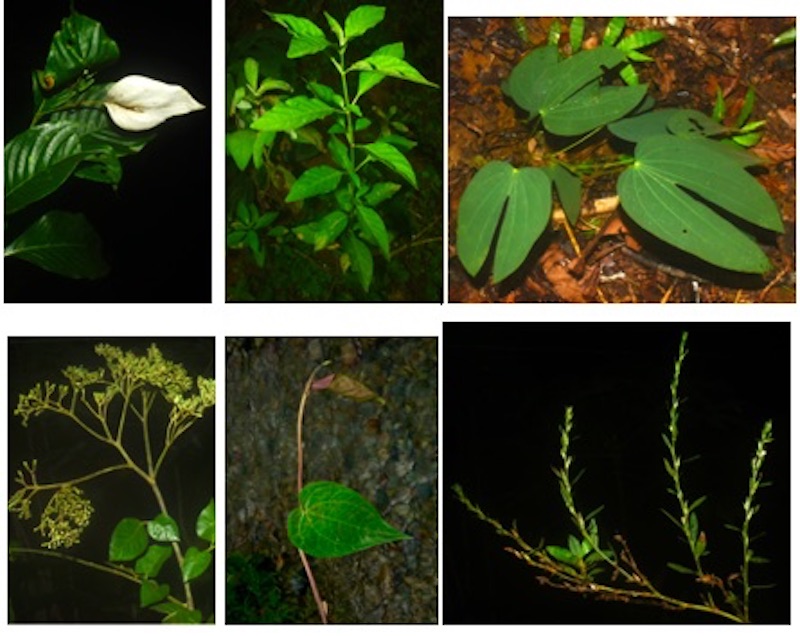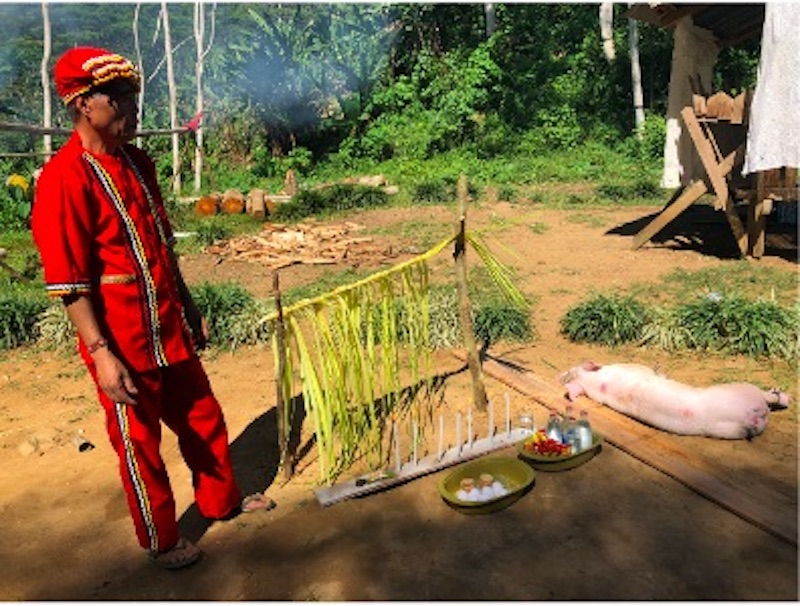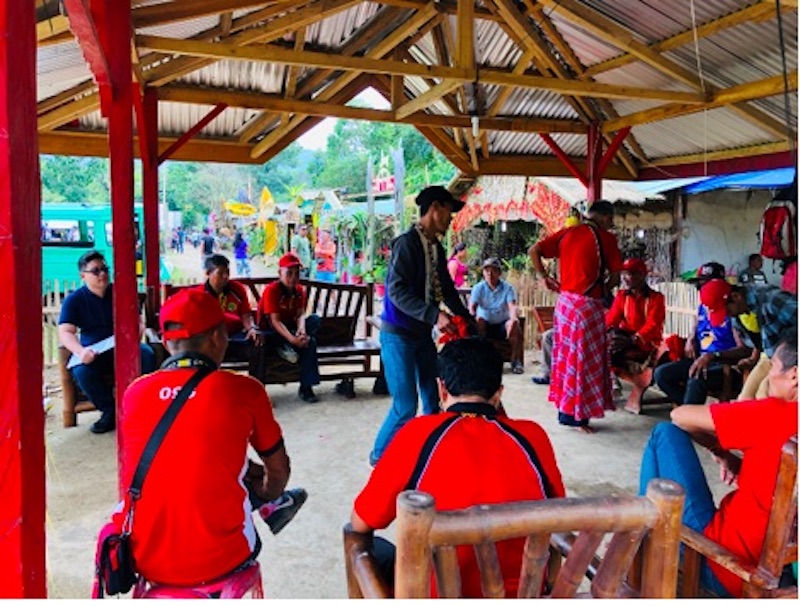DAVAO CITY (MindaNews / 30 August) — Researchers from the University of Santo Tomas and the University of Bayreuth, a public research university in Germany, have documented several plant species used by the Manobos in Bayugan, Agusan del Sur for various ailments.
The research, titled “Ethnomedical appraisal and conservation status of medicinal plants among the Manobo tribe of Bayugan City, Philippines,” published this month in the Biodiversitas Journal of Biological Diversity in Indonesia, sought to record the plant use and ethnomedicinal knowledge of the Agusan Manobo tribe, as well as the conservation status of these plants.
The research was authored by Mark Lloyd Dapar and Grecebio Jonathan Alejandro of UST, as well as Ulrich Meve and Sigrid Liede-Schumann of UB.
 Some of the medicinal plants collected and documented. Photo by MLG Dapar
Some of the medicinal plants collected and documented. Photo by MLG Dapar
Dapar said Indigenous Peoples (IPs) like the Manobos of Bayugan “have the wealth of knowledge, cultural understanding of their environment, and traditional conservation and management, simply because they live mostly in the hinterlands, remote, and often marginalized localities.”
“I consider the IPs as stewards of their indigenous territories,” he said.
As a budding ethnobiologist with research interest in Philippine ethnobotany, Dapar said the Bayugan research has led to an “increasing interest in the value of traditional ecological knowledge for future land management and sustainability.”
The researchers carried out several fieldwork visits, interviewed the Manobo community as key informants, consulted tribal elders for translations, collected and identified the plants used for medicinal purposes, calculated the importance of plant families, as well as the frequency of citation of particular plant species, and assessed their conservation status and endemicity.
The fieldwork was conducted in Bayugan City between March 2018 and April 2019, within the barangays of Mr. Ararat, Mt. Carmel, Mt. Olive, New Salem, and Pinagalaan. Consent was obtained from the provincial administration of Agusan del Sur, the Provincial Environment and Natural Resources Office (PENRO) of Agusan del Sur, and the CARAGA branches of the National Commission of Indigenous Peoples (NCIP), the Department of Environment and Natural Resources (DENR) and the Manobos themselves.
 Manobo ritual seeking permission to enter the forest (Mamaid) in upland New Salem, Bayugan City. Photo by MLG Dapar
Manobo ritual seeking permission to enter the forest (Mamaid) in upland New Salem, Bayugan City. Photo by MLG Dapar
“This is our proactive role as ethnobiologists or ethnobotanists; to analyze, assess, synthesize, evaluate, and reflect that IPs have a unique identity, traditional beliefs, and practices on the uses of their plant community resources.” Dapar said.
Evaluating these parameters, he explained, “could lead other scientists and researchers to the IP’s ecological understanding, diversity of uses, and relative importance of their plant resources which are rooted in the IP’s traditional belief systems and cultural practices.”
After identifying 90 plants, the researchers found that most of the plants used were from trees, with leaves being the frequent plant part used. Piperaceae, also known as pepper plants in English, was the family of plant with highest value of local importance in medicinal use. This meant it was the most frequently cited plant family among informants.
For a single plant, Piper decumanum L., also known as lunas-bagon tapol in the local language, was the most cited species among the informants. Piper decumanum L., in the study, was documented to be the go-to for various ailments such as diarrhea, cancer, and bites
“It’s for snake bites. Lunas,” said Dwight Minglana, an Agusan Manobo based in Butuan City. “When I was a child, it’s like, if I recall correctly, a universal cure for all illness. I hear stories of people getting bitten by venomous snakes and then getting cured by it, by pouring it immediately on the wound. And then it bubbles.”
 : Interview and focus group discussions with the Manobo community. Photo by MLG Dapar
: Interview and focus group discussions with the Manobo community. Photo by MLG Dapar
Results also showed that only 38 plant species could be assessed for conservation status. Most were of the Least Concern (LC) category. Assessment for endemicity shows only a few of the species were endemic to the Philippines, while most others were found in other countries.
The study recommends the inclusion of the IPs as key informants in governmental programs for conservation and management. “This initiative will help preserve the IPs cultural heritage of traditional medicine and conserve cultural community resources.” Dapar noted.
“Ethnobiological studies with its subdisciplines like ethnobotany, ethnopharmacology, and ethnomedicine could provide essential findings for future sustainability and conservation as well as drug discovery and development for future use and advantage,” he said.
(Jonathan A. Watson is a student-writer living in Davao City. He holds a bachelor’s degree from the Father Saturnino Urios University in Butuan City and a master’s degree from the Ateneo de Davao University. Currently, he’s pursuing another masters while working online as a content writer. Though American by birth, he identifies as a Mindanawon)
More information
The research can be accessed here: Biodiversitas Journal of Biological Diversity, 21 (8), 3843-3855. https://doi.org/10.13057/biodiv/d210854
